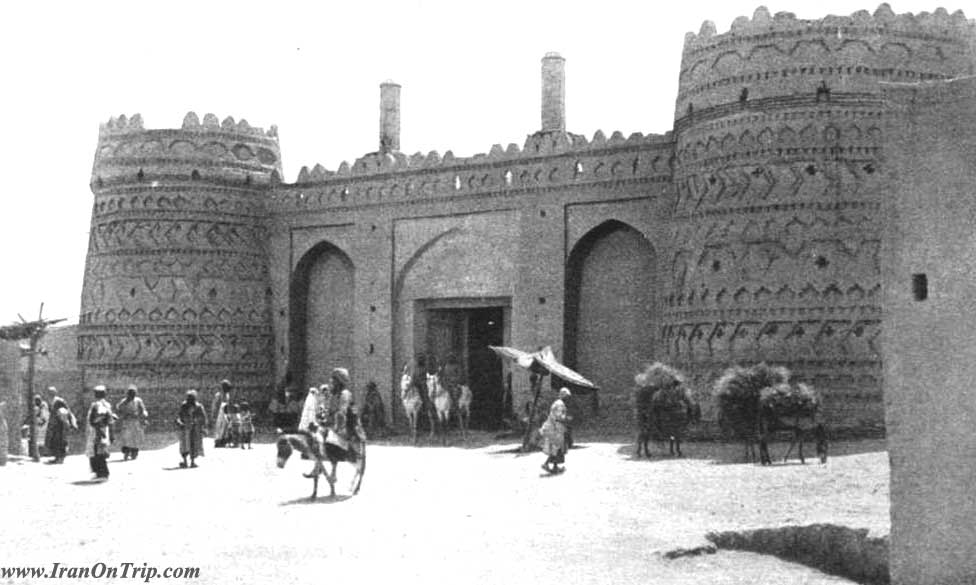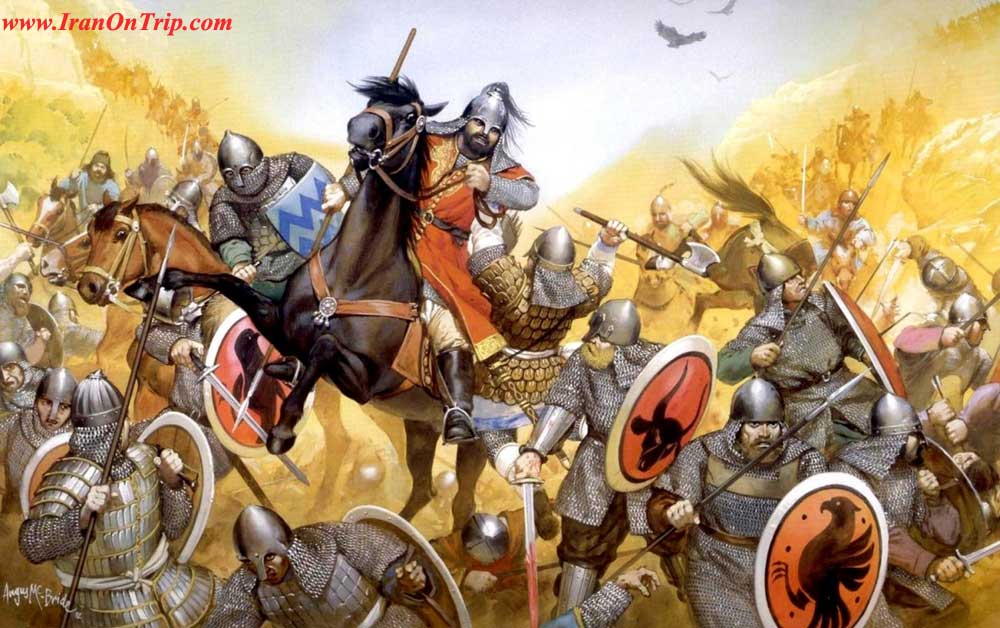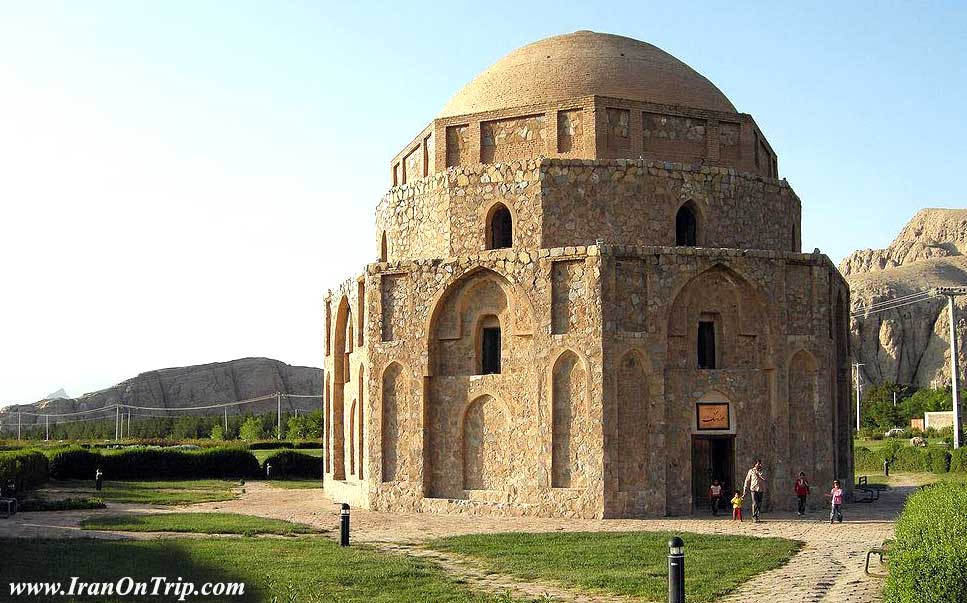History of Kerman

Kerman was founded as a defensive outpost, with the name Behdesīr, by Ardashir I founder of the Sasanian Empire, in the 3rd century AD. After the Battle of Nahāvand in 642, the city came under Muslim rule. At first the city's isolation allowed Kharijites and Zoroastrians to thrive there, but the Kharijites were wiped out in 698, and the population was mostly Muslim by 725. Already in the eighth century the city was famous for its manufacture of cashmere wool shawls and other textiles. The Abbasid Caliphate's authority over the region was weak, and power passed in the tenth century to the Buyid dynasty, which maintained control even when the region and city fell to Mahmud of Ghazna in the late tenth century. The name Kerman was adopted at some point in the tenth century.

Kerman was under the Seljuk Turks in the 11th and 12th centuries, but remained virtually independent, conquering Oman and Fars. When Marco Polo visited the city in 1271 it had become a major trade emporium linking the Persian Gulf with Khorasan and Central Asia. Subsequently, however, the city was sacked many times by various invaders. Kerman expanded rapidly during the Safavid dynasty. Carpets and rugs were exported to England and Germany during this period.
In 1793 Lotf Ali Khan defeated the Qajar dynasty and in 1794 captured Kerman. But soon, he was besieged in Kerman for six months by Agha Mohammad Khan. When the city fell to Agha Mohammad Khan, angered by the popular support that Lotf Ali Khan had received, all the male inhabitants were killed or blinded, and a pile was made out of 20,000 detached eyeballs and poured in front of the victorious Agha Muhammad Khan. The women and children were sold into slavery, and the city was destroyed over ninety days.The present city of Kerman was rebuilt in the 19th century to the northwest of the old city, but the city did not recover to its former size until the 20th century.Kerman city with a height of 1755 m. is located on a high margin of Kavir-e lut (Lut Desert) in the central south of Iran, is the Capital of Kerman Providence. Kerman is counted as one of the oldest cities and its name is derived from the Germaniol race listed by Herodotus, and its construction is attributed to Ardashir I of Sassanid Dynasty (Ardashir-e Babakan) in 3rd century CE.
Kerman was ruled by Turkmans, Arabs and Mongols after the 7th Century CE and was expanded rapidly during the Safavid Dynasty. Carpets and rugs were exported to England and Germany during this period. As it also is a major hand woven carpet production center of the country, and hundreds of small workshops scattered through the city.

Mohammad Khan Qajar
Kerman has had a long turbulent history. It was only during the rule of the Qajar Dynasty that security was restored in this city under the Central Government. Kerman has a small Zoroastrian minority. Most of the ancient Kerman was destroyed in a 1794 earthquake.
The distance between this city and Tehran is 1064 kms. and is on Tehran, Bandar Abbas and Zahedan route. Kerman airport is counted as one of the main airports which has daily & weekly flights to Tehran, Ahwaz, Yazd, Esfahan, Bandar Abbas, Mashhad and Shiraz. Also the Trans Iranian Railway passes through this city.
Kerman city has a moderate and the average annual rainfall is 135 mm. Because it is located close to the Kavir-e lut, Kerman has hot summers and in the spring it often has violent sand storms. Otherwise, its climate is relatively cool.The northern part was and is extremely poor; its is currently known as the Dasht-e Lut, 'Desert of Emptiness'. The southern half, on the other hand, was considered to be very fertile by the Greeks; in an instant, we will see why. The river Hyctanis contained gold and there were silver mines.The Greeks called its most important city Harmozia; its Persian name may have contained the name of the supreme god Ahuramazda. Today, this town is best known as Hormuz, but its true name is Mînâb.
Carmania was part of the Achaemenid Empire. The country must have been conquered by Cyrus the Great the founder of this empire, who ruled 559-530 BCE. However, the ancient Persian lists of subject countries ignore Carmania. The Behistun inscription of king Darius I the Great and the Daeva inscription of his son Xerxes, which both contain long lists of countries subjected to the Persian ruler, do not mention Carmania. This suggests that administratively, the region belonged to the satrapy of Gedrosia or was reckoned to be a part of Persia proper.Carmania is mentioned for the first time in an inscription from Susa known as DSz, as exporter of yakâ wood - probably teak-wood. From the tablets of Persepolis, we know the name of one of the first governors in charge, Karkiš. (He is not called a satrap.) It is also clear from the Persepolis archive, that there was a royal road through Carmania.At an unknown moment in the late fifth or early fourth century, Carmania must have received the status of satrapy, because we know that the Macedonian king Alexander the Great first reappointed the old satrap Astaspes and later -when he passed through the region- choose in quick succession candidates that were more to his liking, Sibyrtius and Tlepolemus (winter 325/324 BCE). During his stay in Carmania, Alexander founded a town for his veterans, which he called Alexandria (which has been identified with modern Golâshkerd, but not every scholar is convinced).

Gonbad -e- Jabaliyeh
Alexander arrived in Carmania from the east; he and his men had traveled through the Gedrosian desert, which had cost many people their lives. When the Macedonian soldiers reached southern Carmania, they found food again ('all crops were born in abundance, except for olives', according to Alexander's admiral Nearchus). Consequently, Greek and Roman geographers wrote that Carmania was extremely fertile, which is exaggerated.After the death of Alexander, Carmania became first part of the Seleucid empire, but in the middle of the second century, it was subjected by the Parthians. In the first quarter of the third century CE, their empire fell; the Persians founded a new empire after 224. The capital of Carmania was moved to Veh-Ardašir, a new town between the salty Dasht-e Lut and the western mountains, now known as Kermân.The Persian kings were Zoroastrians, i.e., they believed in Ahuramazda. One of their holy places was Bam, where the dead were ritually exposed on high platforms. The ruins of these 'towers of silence' can still be seen. The first Christian bishop can be dated in the middle of the seventh century, shortly before or after the Muslims took over (646 CE).
.....
.....
.....

.jpg)



























